Story by Jett Lessing, Photos by Trevor Hunter
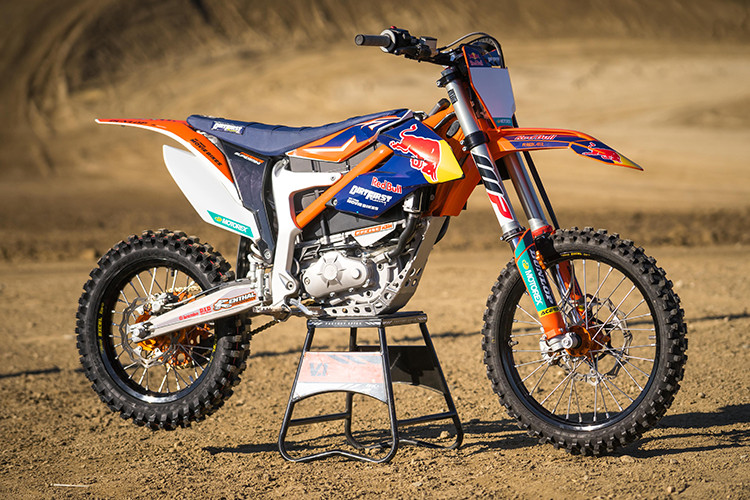
Rider Jett Lessing testing the Dirt First Racing custom KTM electric dirt bike supermini, showcasing its agility and handling on the track.
My experience riding this custom electric KTM supermini from Dirt First Racing was truly eye-opening. Having spent time on KTM’s electric 50cc SX-E with my younger sister, I was familiar with some aspects of electric dirt bikes. Those quiet neighborhood laps on her bike are great for stealthy practice, highlighting a key advantage of e-bikes: minimal noise. Whether enthusiasts are ready or not, electric is clearly gaining momentum in motocross and off-road riding. At Dirt Bike Test (DBT), we’re embracing the potential, recognizing the significant benefits of near-silent operation and reduced maintenance.
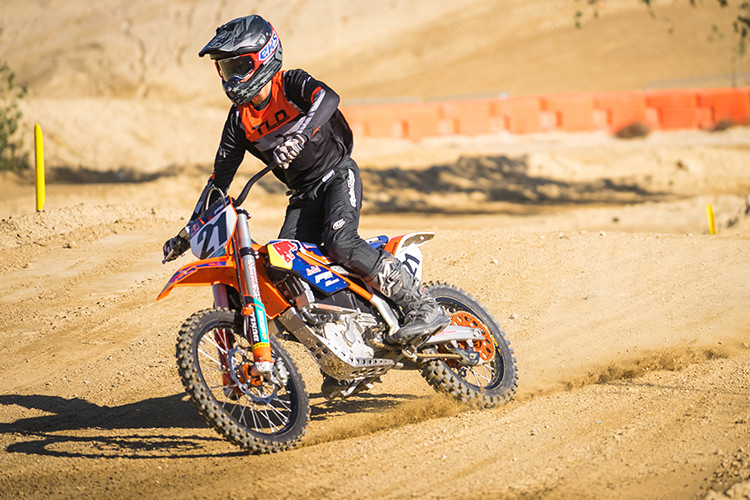
A detailed view of the electric motor and chassis of the KTM electric dirt bike, emphasizing the compact and modern design of electric powertrains.
Diving into the Dirt First Racing Freeride Supermini, the first thing that struck me was the absence of a clutch lever and gear shifter. Initially, this felt unusual, and I instinctively reached for the clutch that wasn’t there. However, this quickly became a surprising advantage, enhancing both control and grip. With fewer fingers needed for controls, I could maintain a firmer hold on the handlebars, increasing riding safety and simplifying the riding process. The bike’s weight, or rather its perceived lightness in motion, was another standout feature. The reduced inertia from fewer internal engine components made the bike feel significantly lighter than its 230 lbs listed weight. Maneuvering the bike mid-air after jumps or correcting slides felt remarkably easy. As a lighter rider, this responsiveness was a welcome change from heavier gas-powered bikes. This lightweight feel could be particularly appealing to smaller or less experienced riders transitioning to a supermini.
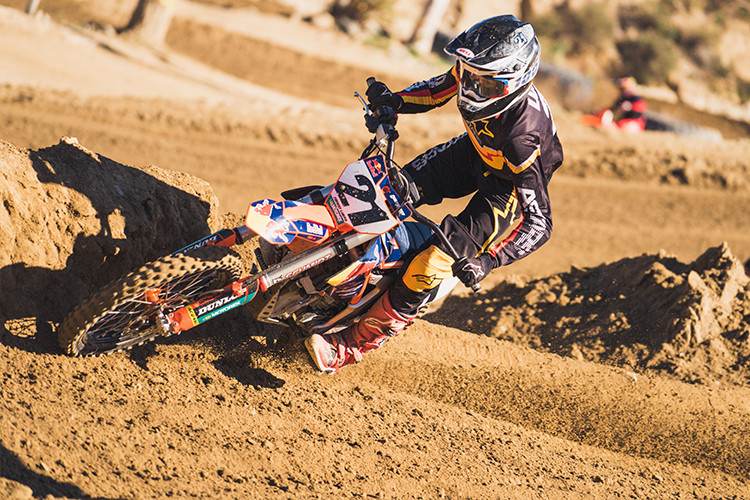
The rider leans into a corner on the KTM electric dirt bike, demonstrating the bike’s smooth power delivery and predictable handling characteristics.
The power delivery of this electric KTM dirt bike is a significant departure from traditional superminis. We noticed the need to initiate acceleration slightly earlier to maintain momentum, a characteristic of the different power curve compared to combustion engines which typically have a stronger initial “hit”. However, the absence of a sudden power surge at the throttle’s opening proved beneficial in corners, preventing chassis upset and allowing for more aggressive throttle inputs without unwanted reactions. The seamless transition from closed to wide-open throttle provided excellent traction, making hill climbs and corner exits feel effortless and controlled.
While the bike might not give the sensation of outright blistering speed, its actual pace is deceptively quick. The quiet operation, combined with the smooth, consistent power and seemingly endless traction, propels the bike forward effectively, even if it doesn’t translate to the same perceived speed as a louder, more aggressively powered gas bike.
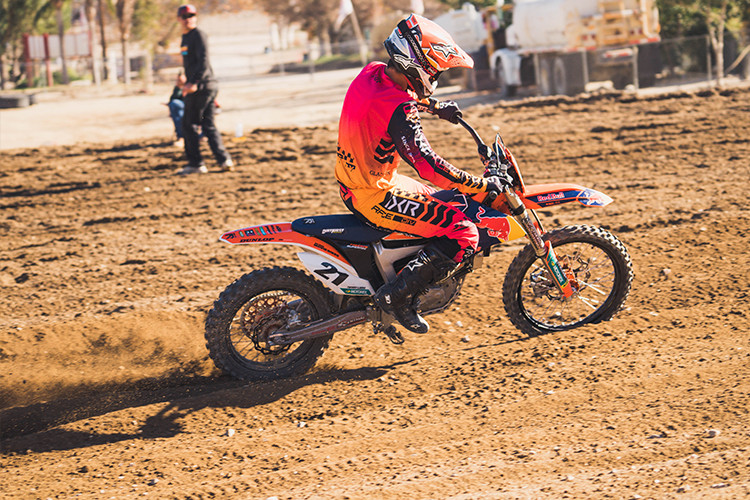
Professional off-road racer Trevor Hunter pushing the limits of the KTM electric dirt bike on the track, testing the battery range and overall performance in demanding conditions.
Battery runtime for this Ktm Electric Dirt Bike supermini is competitive, offering about 25-30 minutes at a fast pace. Pro-level off-road racer Trevor Hunter completed a full 24-minute moto on Glen Helen’s main track before the low-power warning lights activated, indicating the bike was nearing its limp mode (under 10% battery remaining). Dirt First Racing has observed even longer runtimes, with skilled mini riders achieving approximately 29-minute motos before the power reduction kicked in.
The cockpit and specifically the footpeg positioning were points of mixed feedback. The footpegs are set further back and lower than some riders might prefer, a common critique of the stock Freeride E-XC, even for adult riders.
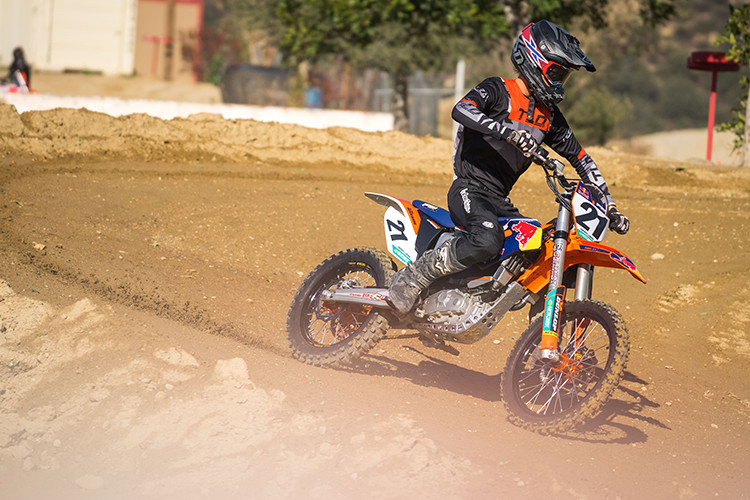
The rider demonstrates improved bike control due to the ergonomic design of the KTM electric dirt bike, allowing for better grip and handling in rough terrain.
At 5’5″, I typically struggle to fully grip my gas-powered supermini with my legs, usually only managing from the knees down. On this electric supermini, the lower footpeg position allowed me to grip the bike with my knees and thighs, significantly enhancing my feeling of control, particularly in rougher sections of the track. Dirt First Racing addressed another common preference by installing a rear brake pedal, replacing the hand brake lever, a modification greatly appreciated by riders accustomed to traditional rear brake setups.
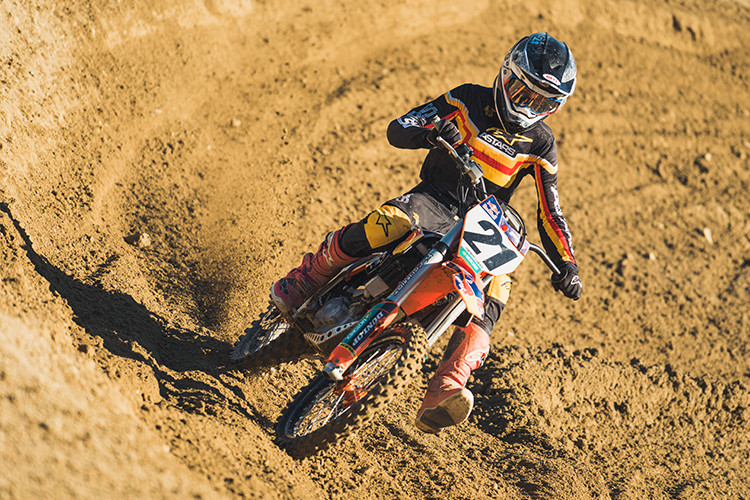
A side profile of the KTM electric dirt bike highlighting its sleek lines and modern aesthetics, appealing to riders looking for high-performance electric options.
One minor drawback is the bike’s resistance when pushing it without power. Electric bikes without gears lack a neutral mode, potentially making them harder to maneuver in off-road situations where pushing may be necessary. However, the readily available torque from the electric motor could also be an advantage, making it easier to power out of situations where a gas bike might get stuck.
A major advantage of electric dirt bikes, especially for owners, is the drastically reduced maintenance. Common issues and routine maintenance associated with gas bikes, such as oil changes, air filter replacements, piston and clutch maintenance, are virtually eliminated. The KTM Freeride features a user-removable battery pack that can be swapped quickly – in about 30 seconds with assistance – minimizing downtime.
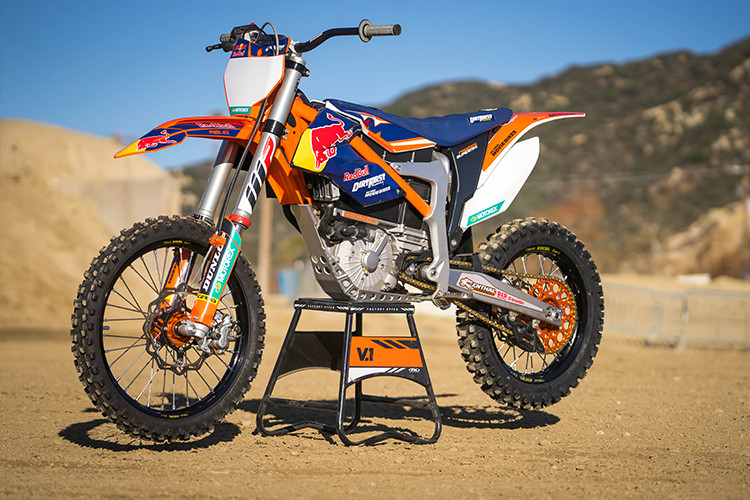
A rider prepares to swap the battery on the KTM electric dirt bike, showcasing the quick-change system designed to extend riding sessions.
The Dirt First Racing KTM Freeride E-XC Supermini comes with a significant price tag, retailing at $17,995 plus taxes and fees. Spare batteries are also a substantial investment, costing upwards of $4,000 each. While the initial cost is high, it’s important to consider the long-term savings. Eliminating the need for gasoline, engine oil, clutches, and top-end rebuilds reduces running costs. Furthermore, the time saved on maintenance translates to more riding time and less garage time.
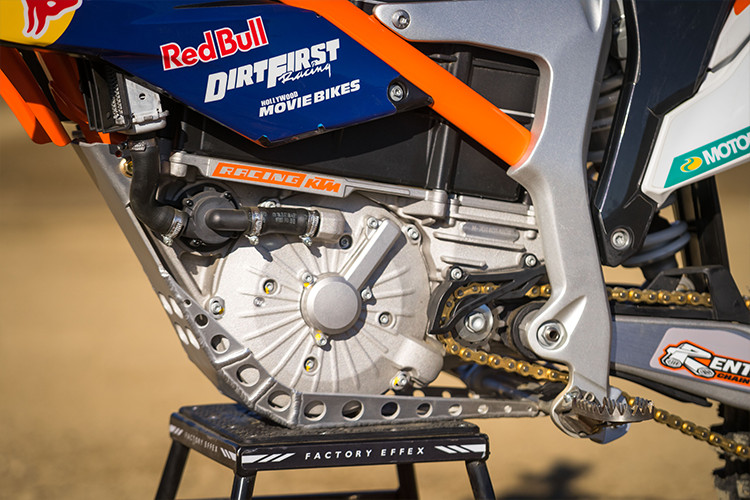
The KTM electric dirt bike being ridden in a residential area, emphasizing the quiet operation and potential for riding in noise-sensitive locations.
Electric dirt bikes offer expanded riding possibilities in noise-restricted areas. The three selectable map modes on this KTM electric dirt bike further enhance its versatility. Power output can be limited for beginners or maximized for experienced riders tackling tracks like Glen Helen. The near-silent operation opens doors to riding in backyards, local fields, or other areas where noise pollution is a concern, broadening the horizons for dirt bike enthusiasts.
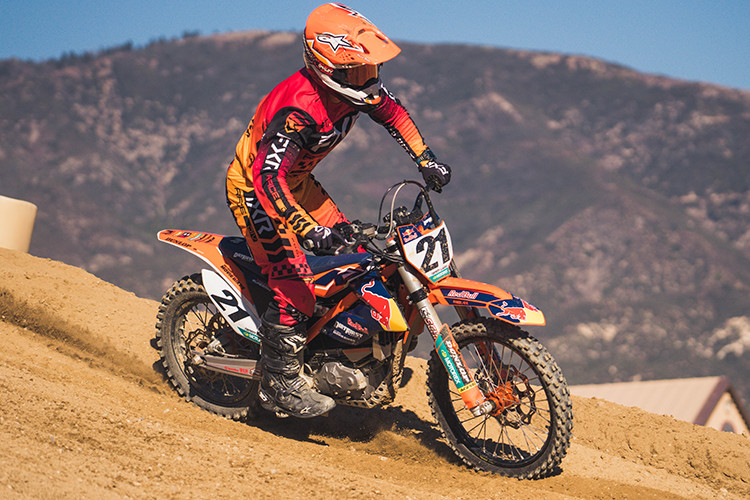
A young racer, Katin, competing on her electric dirt bike, proving the competitive potential of electric motorcycles in motocross and off-road racing.
In conclusion, electric dirt bikes are proving their competitiveness against traditional gas-powered machines. This electric supermini demonstrates significant potential and, with skilled riders and dedicated support, could be a serious contender in the future of off-road racing. My sister Katin’s racing success on electric bikes, including NHHA and WHS championships, underscores the real-world capability and growing acceptance of electric power in competitive mini ranks.
